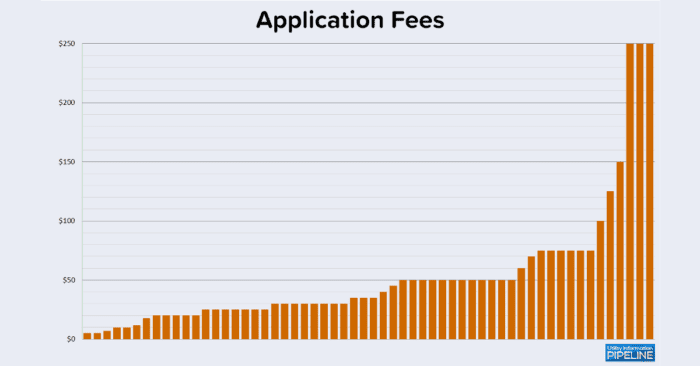Over the course of the past few months, I’ve been conducting the 2023 Utility Fee Survey. This is the fifth Utility Fee Survey dating to 2015, with subsequent fee surveys in 2017, 2019, and 2021. The survey was designed to research what fees utilities charge, how much they charge for each fee, and to see what trends, if any, are occurring with fees.
The Utility Fee Survey is a biennial survey, alternating years with the Utility Staffing Survey.
As was the case in each of the previous surveys, the results include too much information for a single issue. If you’re interested, here are the results from the previous Utility Fee Surveys:
2015 Utility Fee Survey Results
2017 Utility Fee Survey Results
2019 Utility Fee Survey Results
2021 Utility Fee Survey Results
The first results post summarized the demographics of the survey respondents as well as water and sewer tap and impact fees. The last post dealt with delinquent fees and policies. This post will be the third and final survey results issue and will recap all remaining fees.
Returned check fees
All 109 participating utilities charge a returned check fee ranging from $10.00 to $50.00, as this graph illustrates (clicking on any of the graphs will open a larger image in a new window):
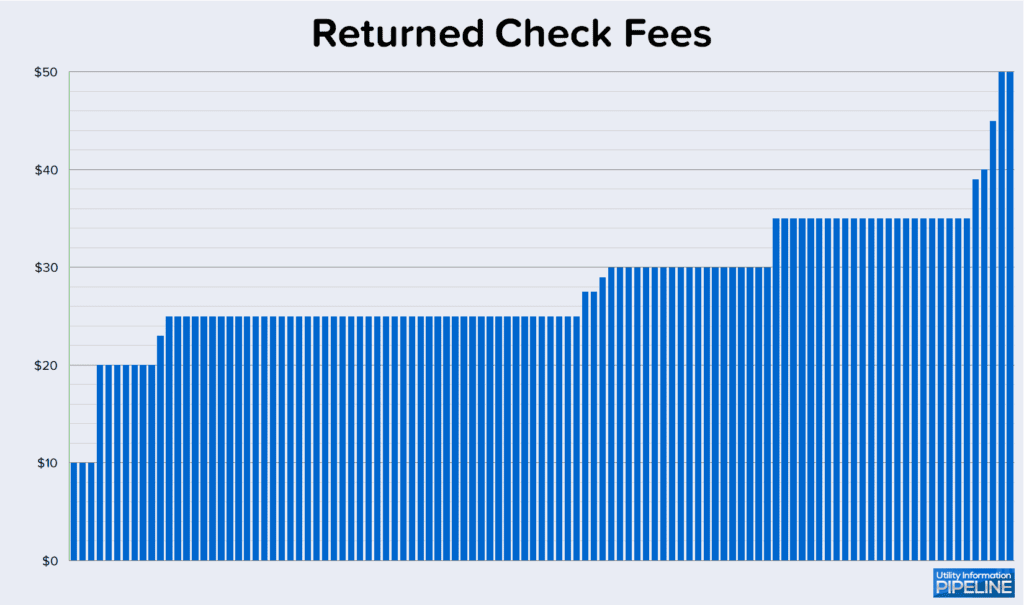
Interestingly, only 55 (or 50.5%) of the responding utilities charge the maximum fee allowed by their state. 40 utilities (representing 36.7%) charge more than the maximum allowed and 14 (or 12.8%) charge less than the maximum allowed.
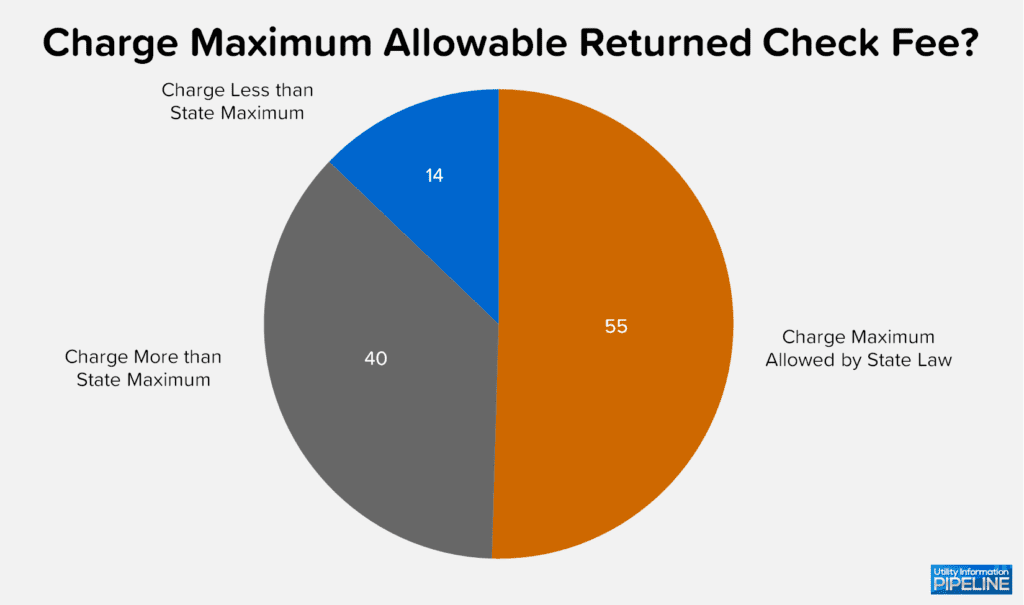
If you’re interested in seeing how your fee compares to the maximum allowed for your state, here is a table with all 50 states.
Application fees
In my How to Increase Revenues without Raising Rates presentation, one of the recommendations is to charge a non-refundable application fee, in addition to any security deposit, to all new accounts. This year, 58 of the 109 utilities (representing 53.2%) responding to the survey charge such an application or administrative fee. This is the highest percentage reported since the beginning of the Utility Fee Survey, up from 46.5% in 2021, 50.4% in 2019, 47.9% in 2017, and 51.9% in 2015. These application fees range from $5.00 to $250.00 as shown below:
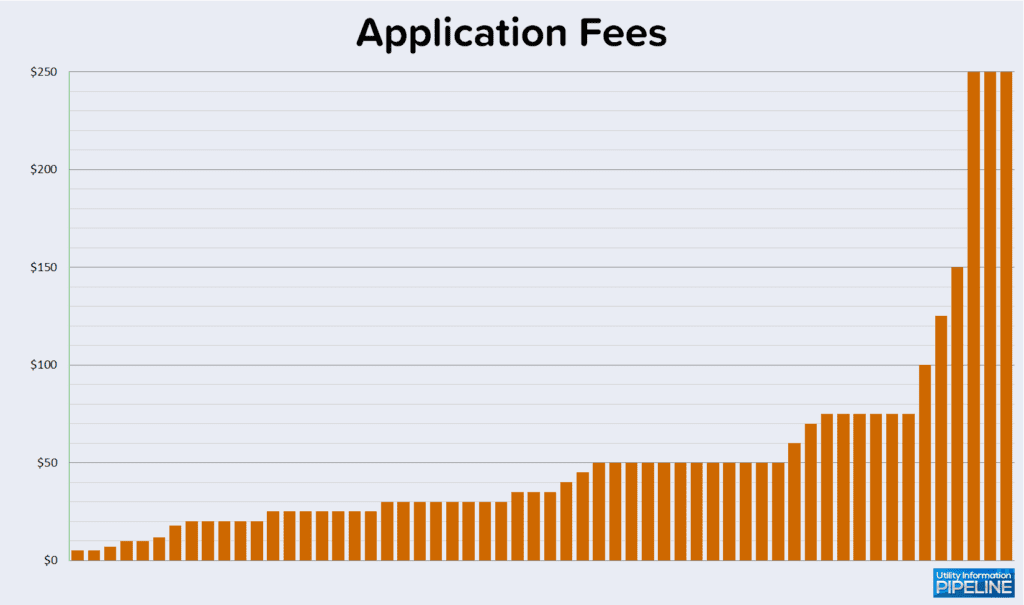
Transfer fees
The Utility Fee Survey also asked how much utilities charge as a transfer fee for transferring service from one account to another. 49 of the 109 utilities (representing 45.0%) charge a transfer fee ranging from $5.00 to $100.00. This is up from 42.3% in 2021. Transfer fees charged by the responding utilities are shown in this graph:
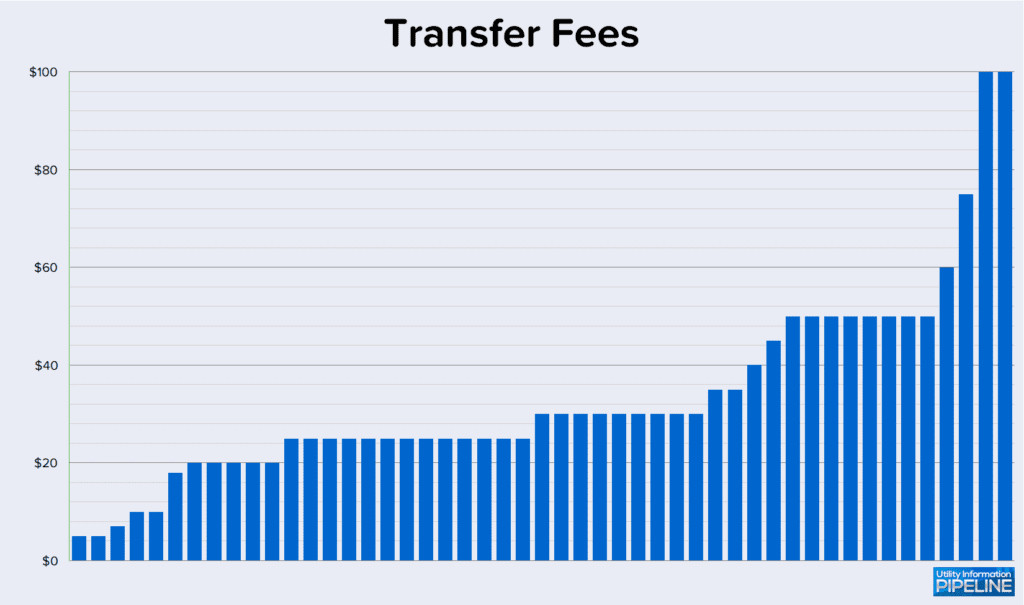
Meter reread fees
25 of the 109 utilities (or 22.9%) charge a meter reread fee if the customer requests their meter be reread. This is up from 17.6% in 2021, but still slightly less than 23.0% in 2019, 23.7% in 2017, and 23.6% in 2015. In many cases, this fee is waived if it turns out the customer was correct and the utility misread the meter. Of the utilities that charge a meter reread fee, the fee ranges from $7.50 to $300.00 as this graph shows:
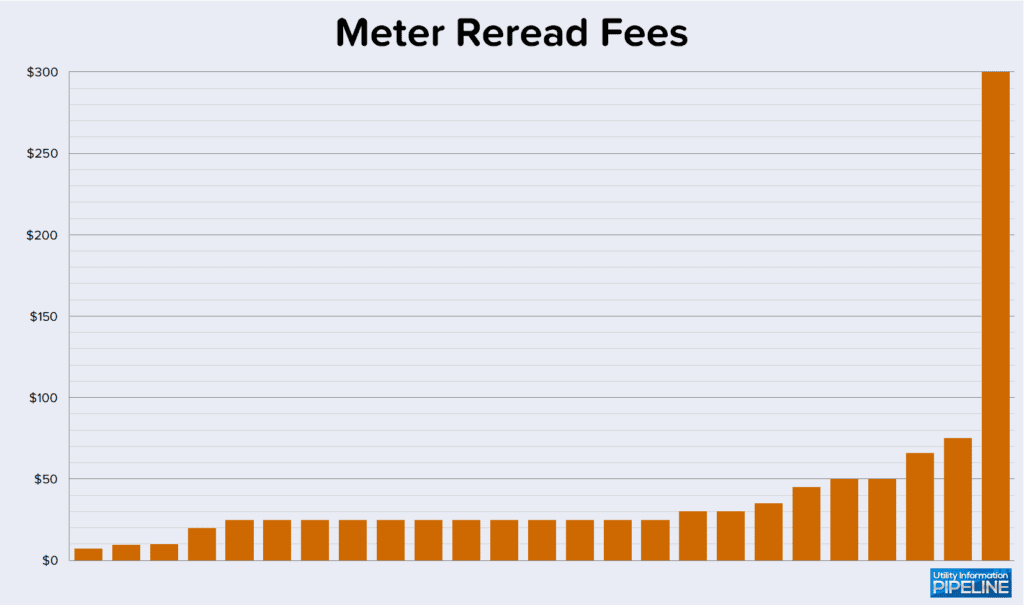
Meter test or calibration fees
For the first time this year, the Utility Fee Survey asked how much utilities charge as a meter test or calibration fee. 53 of the 109 utilities (or 48.6%) charge a fee ranging from $5.00 to $250.00 as shown below:
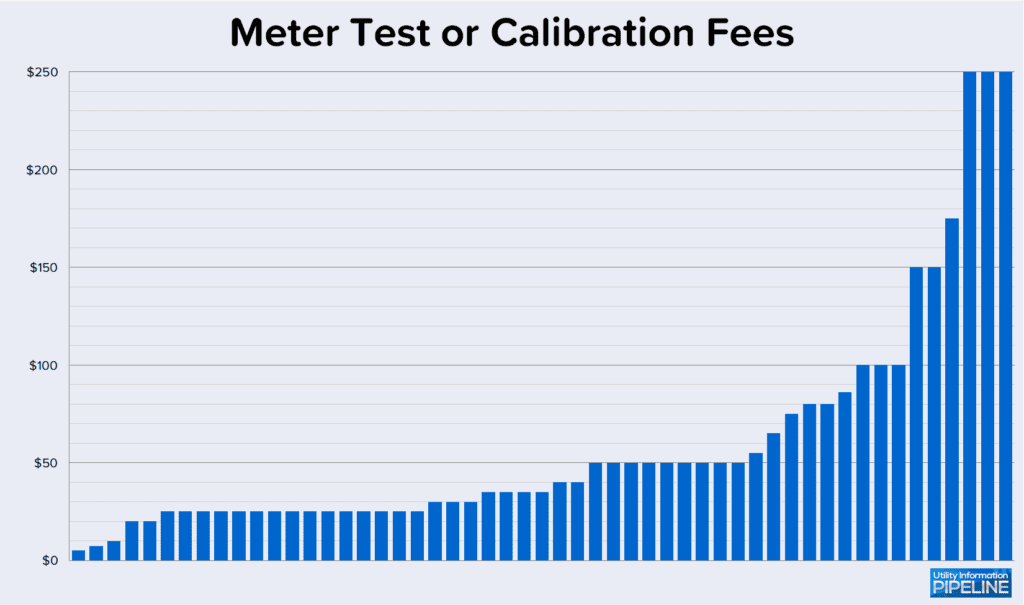
Meter tampering fees
79 of the 109 utilities (or 72.5%) charge a meter tampering fee. This is up from 68.3% in 2021, but down from 73.3% in 2019, 77.1% in 2017, and 73.6% in 2015. Nine utilities charge the actual cost of repairs or cost plus an administrative fee. Six additional utilities recover their costs through the judicial system. Two utilities have an escalating fee that increases with each meter tampering offense. The remaining 73 utilities charge a flat fee ranging from $25.00 to $2000.00 as shown below:
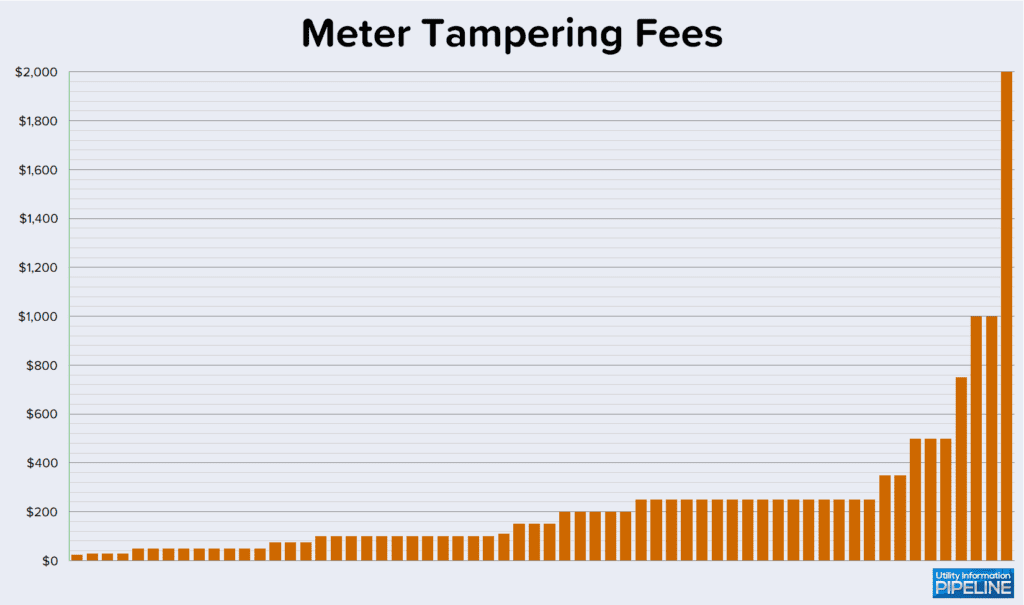
Of the two utilities that charge an escalating fee, one charges $125.00 for the first offense, $250.00 for the second offense, and $500.00 for the third offense. The other charges $100 for the first offense and $200 for the second offense. If there is a third offense, the service is removed.
Convenience fees
Of the 109 utilities responding to the survey, 103 of them (or 94.5%) accept credit cards. This is a slight decrease from 95.1% in 2021, but an increase from 90.4% in 2019, 89.0% in 2017, and 81.1% in 2015. Clearly, credit card acceptance has become standard practice for most utilities.
I’ve written previously about convenience fees and one of the fallacies of charging them. Of the 103 that do accept credit cards, 72 (or 69.9%) of these charge a convenience fee as show below:
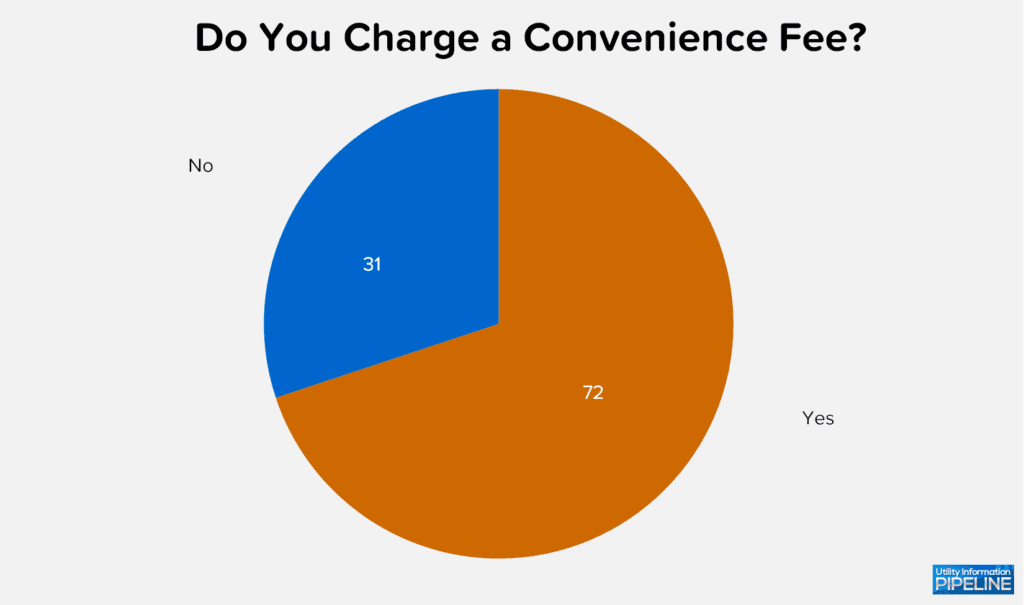
Below is a graphic depicting which methods of credit card payments are assessed convenience fees:
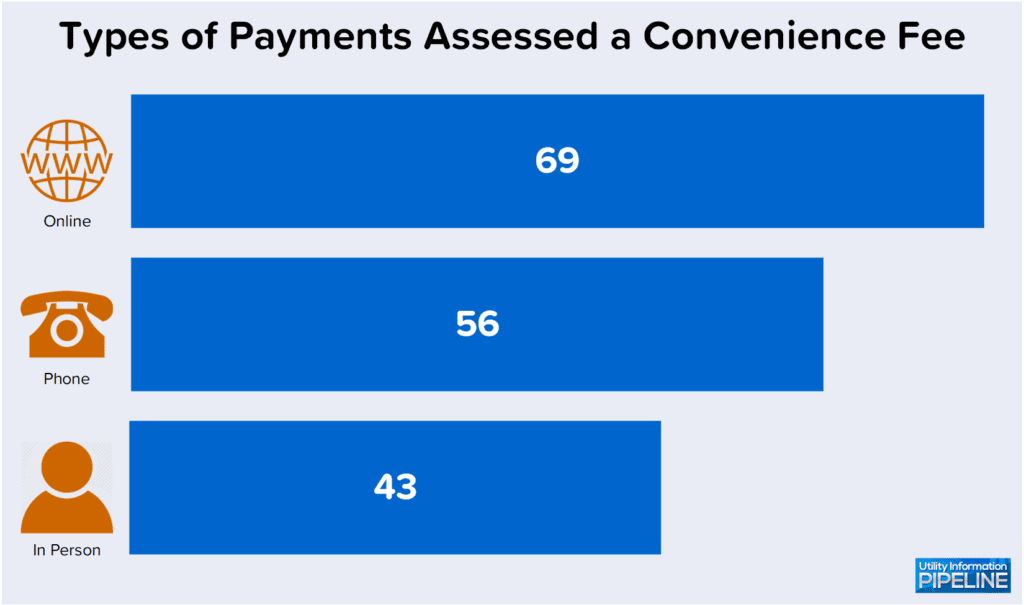
The survey also asked if the convenience fee is charged by the utility or by a third party. Of the 72 utilities that charge a convenience fee, 63 (or 87.5%) are charged by a third party as shown below. This is up from 84.6% in 2021, 81.2% in 2019, and 69.4% in 2017.
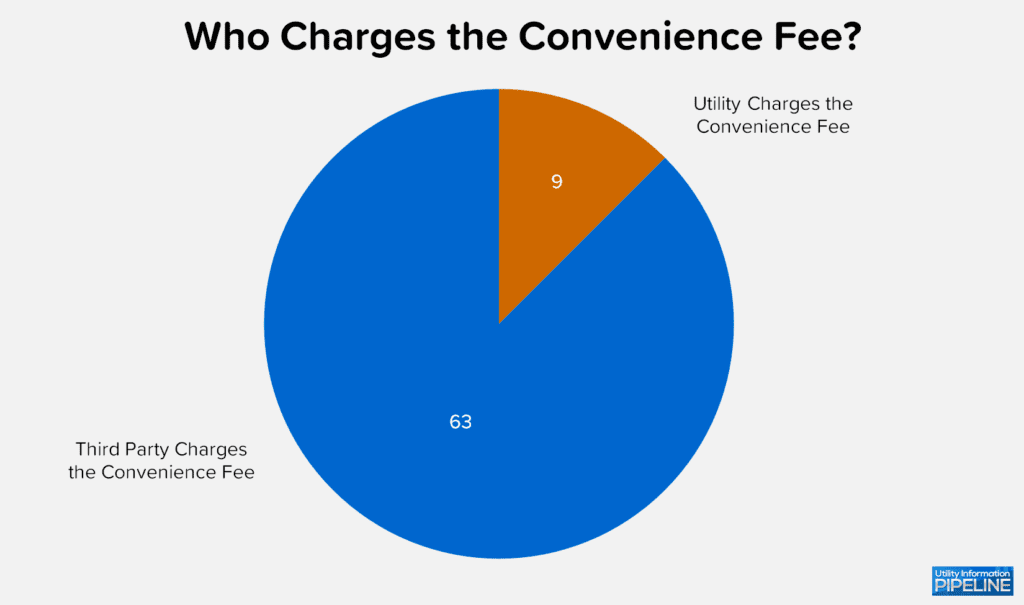
The convenience fees charged by these utilities are too diverse in how they are assessed to be graphed, so they are presented here in a table.
A special offer
I’m offering a special offer to the first three Utility Information Pipeline subscribers who respond. If you are one of the first five to respond, I will conduct a personalized fee consultation for half off the regular price. That’s $750 rather than the usual $1,500 price for this service!
I will review your utility’s current fee schedule and conduct an in-depth phone assessment to learn more about your fees. You will receive a presentation quality document illustrating how your fees compare with other utilities. Also included will be my recommendations for revising any existing fees and suggestions of new fees you should consider charging.
If you are interested in this special offer, please contact me by calling 919-673-4050 or e-mailing me at gary@utilityinformationpipeline.com. Remember, the special discount offer is only available to the first five people who respond!
